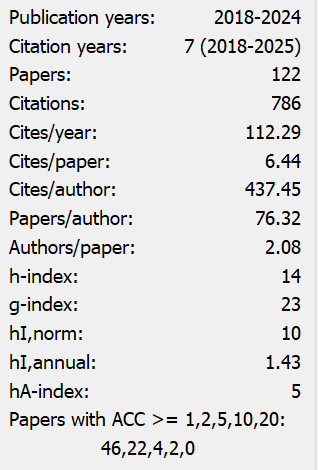The Mechanism of Population Mobility Driving Economic Development from the Perspective of Social Networks
Abstract
As a key bridge connecting individuals and opportunities, social networks play a central driving and regulating role in the complex interaction between population mobility and economic development. The purpose of this paper is to systematically review and critically assess the research on population mobility and economic development based on the social network perspective, focusing on how the social network influences mobility decisions, patterns, and ultimate economic effects through the core mechanisms of information dissemination, trust building, resource acquisition, and social support. The study shows that social networks can not only significantly reduce the cost and risk of migration and shape the path of mobility, but also become an important force to promote regional economic development by facilitating knowledge spillover, labour market matching, consumption pattern integration and industrial linkage. At the same time, its potential closure and uneven distribution of resources may also exacerbate regional imbalance and social differentiation. Future research needs to deepen the exploration of the mechanism, pay attention to the heterogeneity and dynamic evolution of the network, and provide more operational insights for policy making.
References
[2] Wang, Q., & Zhang, N. (2022). Dialect distance, hometown network, and cross city mobility. Nankai Economic Research, (03), 98–120.
[3] Sheng, Y., Shang, J., & Zheng, H. (2023). The influence of clan culture on urban entrepreneurship of floating population. Population Research, 47(04), 114–128.
[4] Zhang, P., & Han, T. (2023). My people, my homeland: Migration and inter-provincial trade in China. World Economy, 46(02), 31–55.
[5] Tan, S., Wei, Y., & Li, X. (2022). The impact of urban network externalities and agglomeration externalities on urban economy from different neighborhood perspectives: A case study of Liaoning Province's urban network. Geographical Research, 41(09), 2404–2417.
[6] Li, Z., Wang, J., & Wang, W. (2022). The evolutionary characteristics and driving factors of the spatial pattern of inter-provincial rural labor mobility in China. World Geographic Research, 1–15.
[7] Wang, Z., & Yu, J. (2023). Research on the impact of labor mobility on multidimensional relative poverty of farmers. Northwest Population, 44(04), 1–15.
[8] Hu, J., & Li, W. (2023). Rural labor mobility and preference for elderly care models: Impact, mechanism, and group differences. Rural Economy, (05), 134–144.
[9] Yin, Z., Liu, T., & Zhang, Y. (2021). How labor mobility affects farmers' borrowing: An analysis based on social networks. World Economy, 44(12), 131–154.
[10] Zhou, X., & Wu, Y. (2024). Drip or siphon: A study on the consumption relationship between floating population and urban population. Journal of Sun Yat-sen University (Social Sciences Edition), 64(02), 55–66.
[11] Cheng, Y., Li, J., & Liu, K. (2024). The network evolution, mechanism and urbanization effect of inter-provincial population mobility in China. Urban Development Research, 31(06), 98–108.
[12] Freeman, L. C. (1977). A set of measures of centrality based on betweenness. Sociometry, 35–41.
[13] Zeng, Y., Zhong, Z., & Liu, H. (2023). From the perspective of network, the transition of China's inter-provincial population mobility pattern and its driving mechanism: 1991–2020. China's Population, Resources and Environment, 33(03), 160–170.
[14] Huang, Z., Zhen, F., & Xi, G. (2023). Characteristics and influencing factors of daily population mobility network structure in the Nanjing metropolitan area. Human Geography, 38(04), 112–120.
[15] Granovetter, M. (1973). The strength of weak ties. American Journal of Sociology, 78, 1360–1380.

This work is licensed under a Creative Commons Attribution 4.0 International License.
Copyright for this article is retained by the author(s), with first publication rights granted to the journal.
This is an open-access article distributed under the terms and conditions of the Creative Commons Attribution license (http://creativecommons.org/licenses/by/4.0/).


























